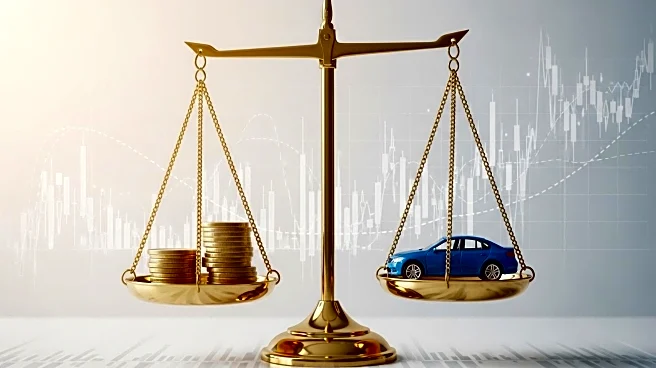What is the story about?
What's Happening?
The average price for new vehicles in the U.S. has surpassed $50,000 for the first time, according to Cox Automotive's Kelley Blue Book. This milestone comes as auto loan delinquencies, defaults, and repossessions have increased, particularly among consumers with subprime credit. The automotive market is experiencing a 'K-shaped' economy, where wealthier consumers continue to purchase new vehicles, while those with lower incomes face financial challenges. The disparity in consumer spending reflects broader economic trends following the coronavirus pandemic.
Why It's Important?
The rise in new vehicle prices and increasing auto loan delinquencies highlight the economic challenges facing lower-income consumers in the U.S. This development is significant for the automotive industry, as it underscores the potential for market disruption and changes in consumer behavior. Stakeholders in the automotive sector may need to adapt to shifting consumer preferences and address affordability concerns. Additionally, the broader economy may see increased pressure on lower-income households, affecting overall economic growth and stability.
What's Next?
As new vehicle prices continue to rise, the automotive industry may face increased scrutiny from regulators and policymakers. Stakeholders will be watching for potential interventions, such as fiscal stimulus measures or changes in lending practices, to address affordability concerns. The industry may also see increased innovation in financing options and vehicle offerings to cater to diverse consumer needs. Additionally, the broader economy may experience shifts in consumer spending patterns, affecting various sectors and economic stakeholders.
Beyond the Headlines
The disparity in consumer spending on new vehicles reflects broader economic trends, highlighting the challenges facing lower-income households. As the automotive industry navigates these challenges, it must balance transparency with compliance, a task that many industries face. This situation underscores the complexities of maintaining consumer confidence while addressing affordability concerns. Additionally, the broader economy may see increased pressure on lower-income households, affecting overall economic growth and stability.
AI Generated Content
Do you find this article useful?













